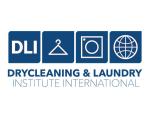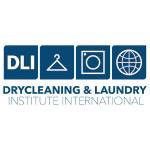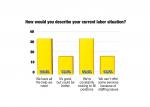LEHI, Utah — While today’s workforce has different demands and outlooks, there is one universal need: to be recognized for good work. If this happens, better habits and increased productivity often occur. If it doesn’t, performance, engagement and employee well-being will suffer.
This was the message of Stephen Jolley, marketing leader at the employee engagement and recognition platform Motivosity, during his recent webinar “The Journey of Employee Recognition: From ‘Nice Job’ to Business Game-Changer,” hosted by the Society for Human Resource Management (SHRM).
In Part 1 of this series, we examined the history of employee recognition programs, ranging from the Industrial Revolution to modern day, along with the impact ignoring such programs can bring to both businesses and employees. In Part 2, we probed some of the common hazards companies should avoid when it comes to this facet of business.
Today, we’ll conclude this series by exploring six ways the owners and managers of today’s drycleaning companies can make sure their employees feel valued.
The Six Keys to Employee Recognition
“While still impactful, (yesterday’s) top-down manager-led recognition programs clearly fall short of helping every employee get recognized for work that’s worth recognizing,” Jolley says.
For today’s drycleaning operations and other businesses, he instead urges leaders to implement a modern recognition program that focuses on six key elements:
- Peer-to-Peer Recognition — “Managers and executives simply can’t be present to witness all the good work employees are doing daily,” Jolley says. By enabling peer recognition, owners and managers effectively deputize every employee to acknowledge positive contributions. This is particularly valuable in drycleaning companies, where teams work different shifts and stations.
- Public Recognition — “Public recognition socializes the good, reinforces the positive and connects cultures,” Jolley says. When recognition is visible, it inspires others and fosters excellence. For multi-location drycleaning businesses, this visibility helps maintain consistent standards across sites.
- Value-Based Recognition — High-performing companies align recognition with core values, Jolley says. For drycleaning companies, these typically include:
- Customer service excellence
- Quality and attention to detail
- Teamwork and reliability
- Safety and efficiency
- Automated Milestones — ”Milestone awards and gifts shouldn’t create additional work, but also shouldn’t risk being missed,” Jolley says. Automating recognition for birthdays, work anniversaries and service milestones ensures consistent acknowledgment without burdening management.
- Flexible Rewards — ”Instead of wasting budget on items employees don’t actually care about, let’s give them the opportunity to choose what they want,” Jolley suggests. This might include:
- Cash bonuses
- Gift cards
- Extra time off
- Professional development opportunities
- Digital Connection Spaces — Even for hands-on businesses like dry cleaning, digital spaces for employee connection matter. These spaces should include non-work-related areas such as hobbies or other personal interests. “It’s essential that company culture have a dedicated place to thrive,” Jolley says.
Success for the Long Term
The impact of modernized recognition is measurable, Jolley says:
- Peer feedback can enhance employee performance by 14%.
- Companies with recognition programs see 31% lower turnover.
- Ninety-one percent of HR professionals report positive impacts on employee retention.
“Building a better recognition program means building better reasons for your employees to stay long-term,” Jolley says. For drycleaning businesses, where skilled labor retention directly impacts service quality and customer satisfaction, this investment in modern recognition practices can provide a significant competitive advantage.
Start with one element at a time, then measure results and adjust based on employee feedback, Jolley says. The goal isn’t perfection, but progress toward a more engaged, connected and productive workforce.
For Part 1, click HERE. For Part 2, click HERE.
Have a question or comment? E-mail our editor Dave Davis at [email protected].
















































































